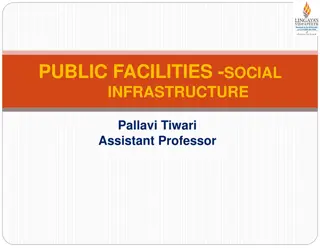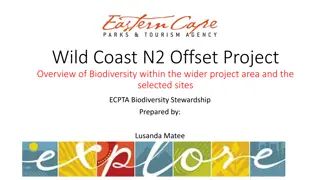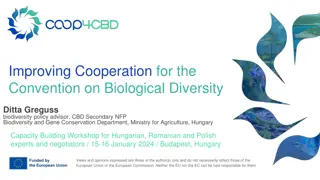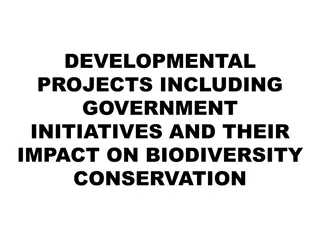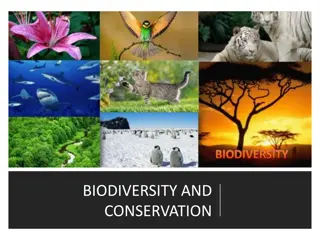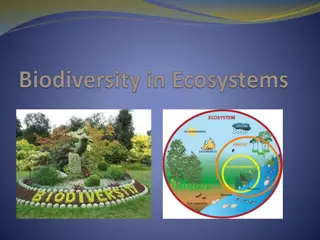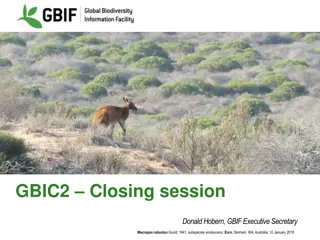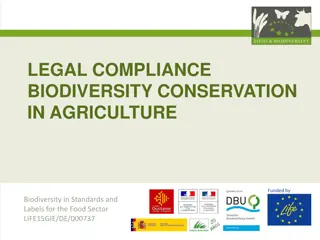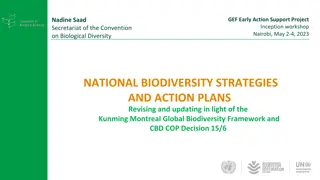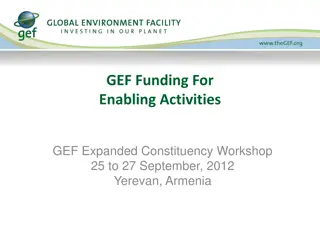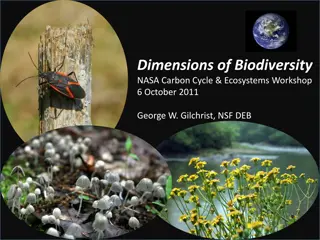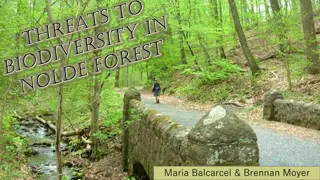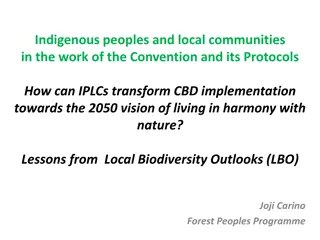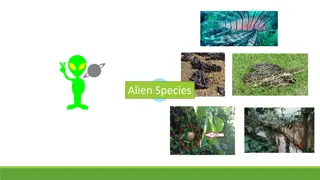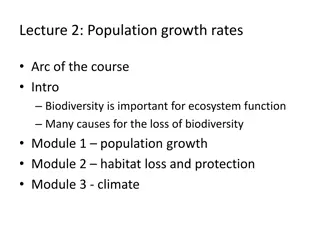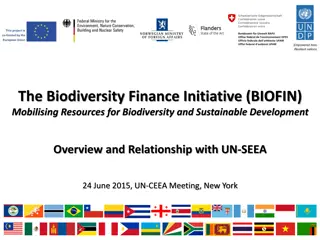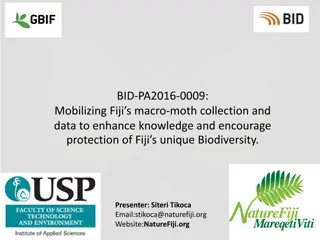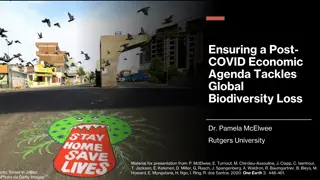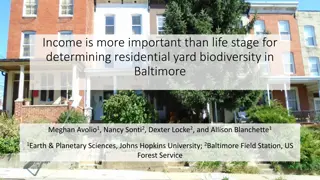
Exploring Biodiversity Activities for Environmental Education
Dive into engaging activities focused on biodiversity, such as writing about the importance of biodiversity in farming, mapping distances to major cities, identifying native species in New Zealand, discussing predator control, monitoring biodiversity sites, and interacting with guest speakers. Discover the significance of protecting biodiversity and brainstorm ideas to enhance environmental conservation efforts.
Download Presentation

Please find below an Image/Link to download the presentation.
The content on the website is provided AS IS for your information and personal use only. It may not be sold, licensed, or shared on other websites without obtaining consent from the author. Download presentation by click this link. If you encounter any issues during the download, it is possible that the publisher has removed the file from their server.
E N D
Presentation Transcript
Unit 4 Biodiversity Activities
Lesson 1 Lesson 1 Activity 1: -Writing activity. Biodiversity is__ Biodiversity is important because ____ Biodiversity is important for farming because _____
Lesson 1 Lesson 1 Activity 2: -Mapping Activity. Starting Location________________ Use Google to find out the distance from the town or city your school is in e.g. Nelson to major cities around the world. Destination Destination New York New York Sydney Sydney Beijing Beijing Singapore Singapore Jakarta Jakarta Tokyo Tokyo London London Distance in Km Distance in Km Find out the distance to New York, Sydney, Paris, Beijing, Singapore, Jakarta, Tokyo and London. Choose two New Zealand exports primary products to. two other cities in countries
Lesson 1 Lesson 1 Activity 3: - New Zealand s Native Taonga Native plants (flora) and animals (fauna). Pest harming native plants (flora) and animals (fauna). Other factors that are negatively affecting native plants (flora) and animals (fauna).
Lesson 2 Activity 1: - Predator control Why do we need to control predators? Watch the video s and Watch the video s and discuss discuss Why New Zealand needs predator control? Questions I have about biodiversity and controlling predators. This is impossible , but New Zealand is trying anyway. S Students tudents Things we are doing to protect NZ z biodiversity are Why do we need to control predators? Write down questions you have about Biodiversity o Controlling predators o Ideas to help protect and improve NZ s biodiversity What do you think is being done to protect New Zealand biodiversity? Write down and discuss ideas you think can be done to help protect and improve biodiversity?
Lesson 2 Lesson 2 Activity 2: - Biodiversity monitoring photo point sight Record photos of your biodiversity monitoring sight so you can check back to see the changes. Things you could do. Count the number of different plants Count the number of insects and birds Measure the height of a native tree
Lesson 2 Lesson 2 Activity 3: - Guest speaker Questions to ask the guest speaker Questions to ask the guest speaker Reflection and writing activity Reflection and writing activity Name of guest speaker. What does the guest speaker do? What did you learn from the guest speaker? Writing activity- Write an article or speech about what you learnt from the guest speaker about biodiversity in your area and what they are doing to protect biodiversity.
Lesson 2 Lesson 2 Activity 4: - Research activity Other research topics Other research topics S Select a plant or animal pest to research. elect a plant or animal pest to research. Suggestions to help direct your research. How a pest in your region/area is causing loss of biodiversity and what can be done to stop this pest? o Find or take a photo of your animal/plant pest. o Find out why the animal/plant you have selected is a pest. o Find out how the animal/plant pest is harming biodiversity? o Find out how this animal/plant pest is being controlled? o Other interesting facts about you animal/plant pest. How fencing off and planting a waterway or wetland in native plants can improve biodiversity? How planting native plants can improve biodiversity? Investigate what your school could do to improve biodiversity. Design a plan for your, school or local bush area to monitor and control pests. New Zealand has a goal to be pest free by 2050. What needs to be done to achieve this?
Lesson 2 Lesson 2 Activity Activity 5 5: Monitoring pollinators : Monitoring pollinators Objective Objective: To study the attraction of pollinators to different flowers, highlighting the importance of different plant species for supporting biodiversity. How to set this up? How to set this up? Choose a spot in the school grounds that has a variety of plants. These could be native trees and flowers such as Kowhai, Manuka, Harakeke or Hebe but any flowering plants will do. Set up observation station so you can observe the insects or birds visiting the flowers. Take the handout Pollinators in New Zealand to help you identify the pollinators. Observe and record the types and number of pollinators (e.g. bees, butterflies, birds) visiting the flowering plants over a specific time period e.g. 3 minutes for 5 days Analyse the data to determine which flowers attract the most diverse and abundant pollinator populations. Discuss the crucial role of flowering plants in providing food and habitat for pollinators.
Lesson 3 Lesson 3 Activity 3: - Land use and biodiversity In your group discuss How the land is being used? What can you see that is good or not so good for supporting biodiversity? Report back to the whole class on you land use and how it is influencing biodiversity.
Lesson 3 Lesson 3 Activity 4: -Biodiversity Scenarios Read your scenario and discuss the questions and the challenge. Record your answers and ideas. Student presentations guide Students plan, develop and present their solutions to the class. Students can present in any format however; all students must participate. Students must refer to their specific scenario. Presentation must include at least TWO effects on crops and/or animals and ONE solution And the answer to the challenge.
Lesson 3 Lesson 3 Activity 5: - Reflection question Now you know what biodiversity is, why it important, what farmers, growers, iwi and organisations are doing to improve and protect our precious biodiversity. Make a list or a plan about what you can do to help protect and improve biodiversity where you live?



